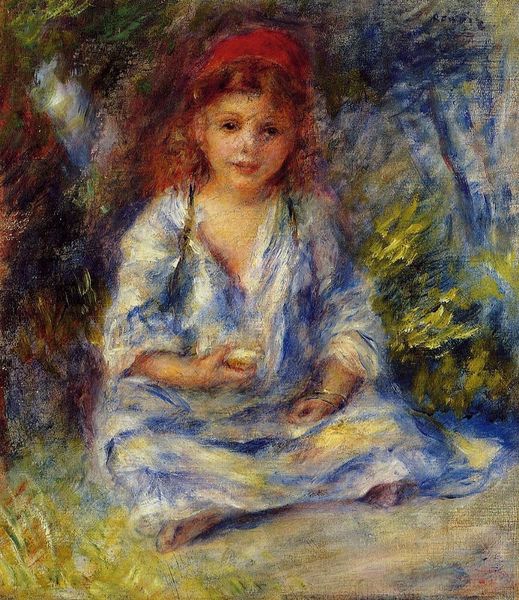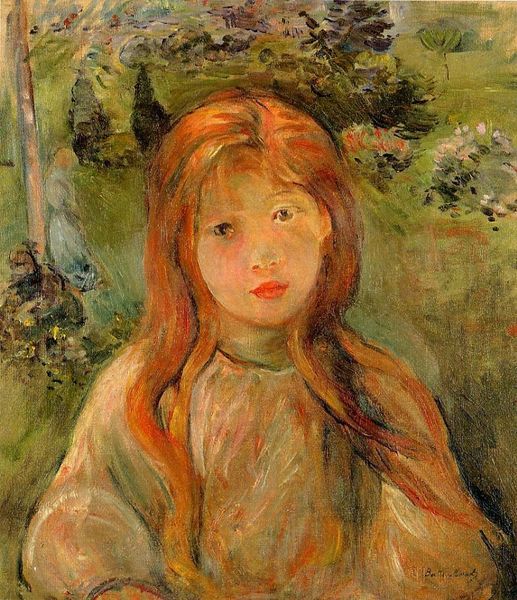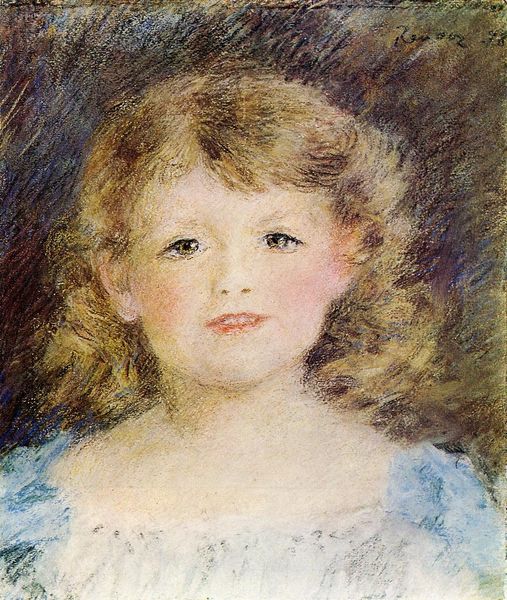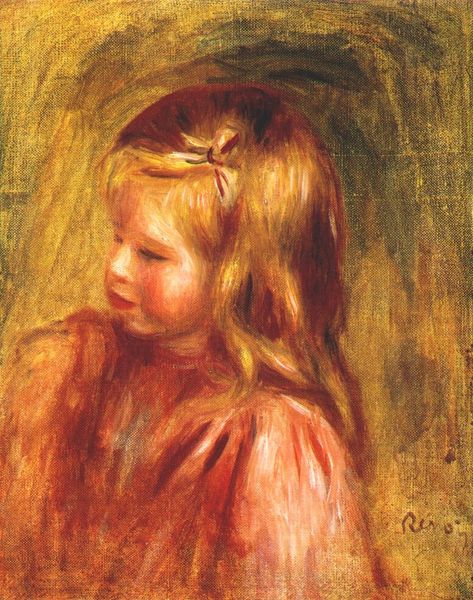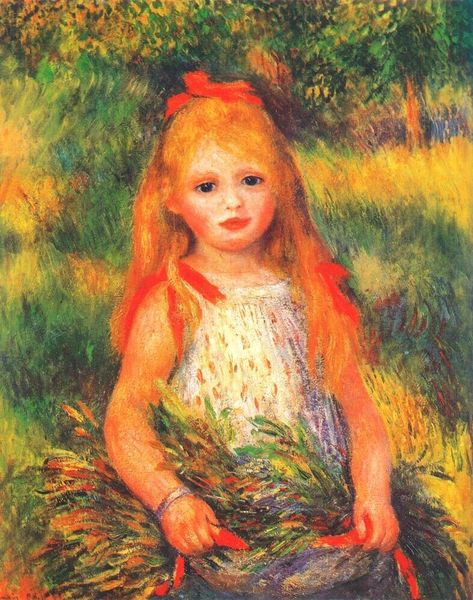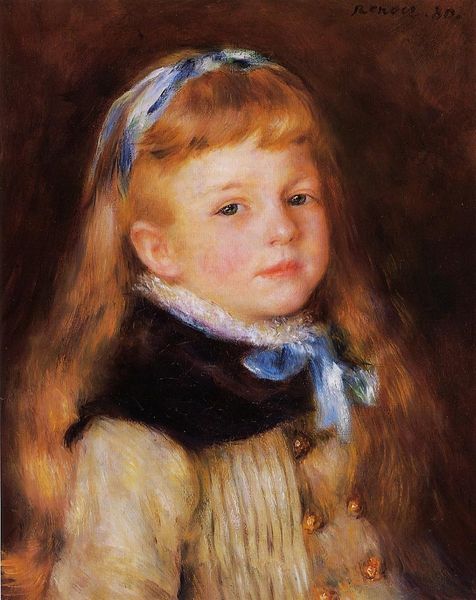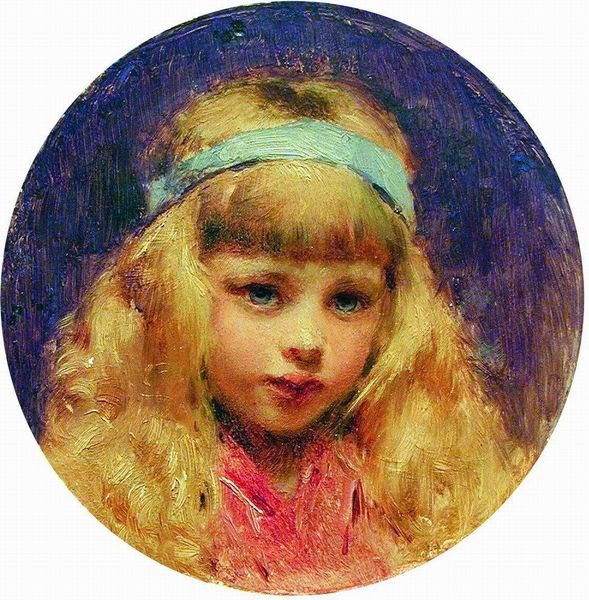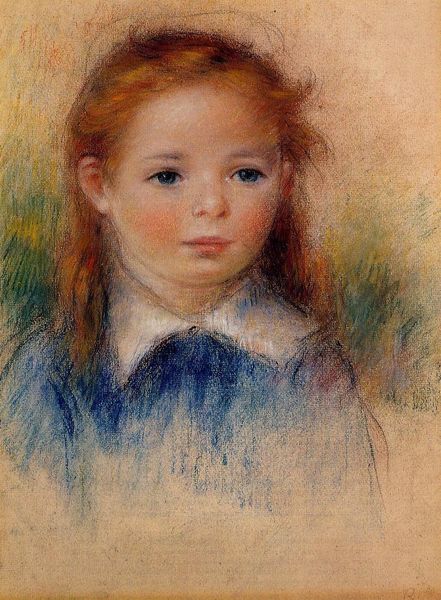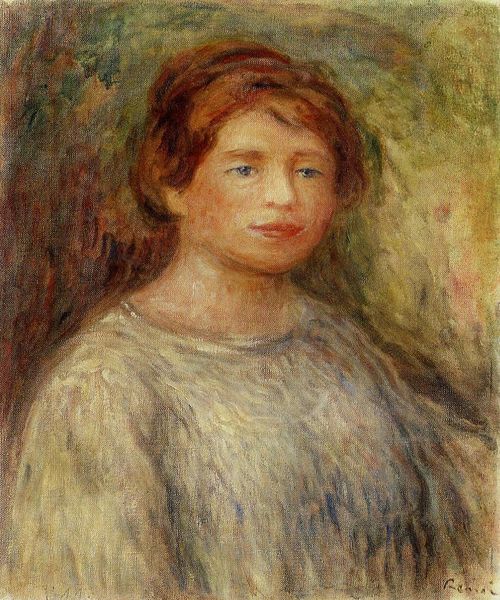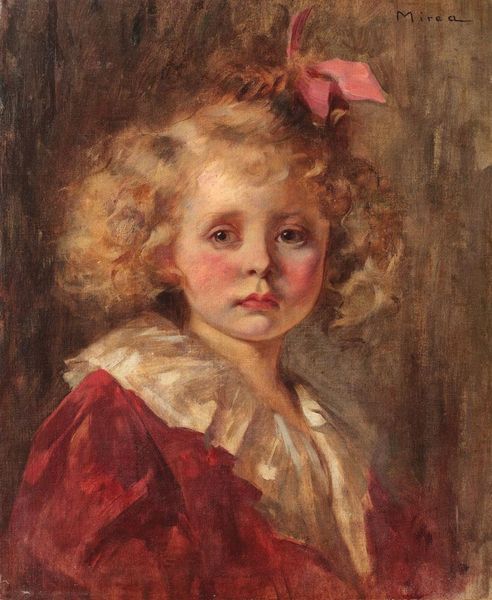
painting, oil-paint
#
portrait
#
gouache
#
painting
#
impressionism
#
oil-paint
#
figuration
#
oil painting
#
genre-painting
#
lady
#
realism
Copyright: Public domain
Curator: Pierre-Auguste Renoir painted "Gypsy Girl" in 1879. It’s an oil painting, and the current location is listed as a private collection. Editor: It’s evocative! At first glance, I’m struck by the warm palette. There's a dreamlike quality to the girl’s hazy outline, like a figure emerging from a myth. Curator: The feathery brushstrokes definitely contribute to that softness. Renoir was a master of capturing light, which here seems to diffuse and envelope the figure rather than define it sharply. It is representative of the Impressionistic movement that emphasized the ephemeral quality of perception. Editor: Is there anything truly ‘gypsy’ about her, or is that merely a romanticized notion? It's tempting to view this as an idealized image rather than an authentic representation of a marginalized group. The "gypsy" theme was often appropriated and romanticized in 19th-century art. Does this piece perhaps further a stereotype? Curator: That’s an insightful point. We see the loose application of paint here, as a formal element. Consider how Renoir uses color not to describe, but to suggest. The girl's features blend with the background, eschewing hard lines for a play of light and color that, though pretty, flattens the complexities of the subject's lived experience into surface and form. Editor: It seems she's been stripped of her potential agency in life; instead, she stands more as a symbolic element within a decorative whole. Renoir frequently depicted women within constrained social roles. Curator: And the composition supports this; the young girl is positioned centrally, but her gaze isn't confrontational, her physical bearing relaxed; it makes her an object of visual contemplation. One almost doesn’t register what she is holding, further reducing her presence to formal aspects only. Editor: Precisely. Knowing this context allows us to examine the aesthetic strategies and broader implications behind works like these, moving us towards critical thinking and hopefully a greater socio-political awareness. Curator: Indeed. Appreciating the technical mastery while remaining aware of the historical context lets one engage the work as more than just a visual experience, a vital moment of reckoning that bridges formalism with questions of value.
Comments
No comments
Be the first to comment and join the conversation on the ultimate creative platform.
